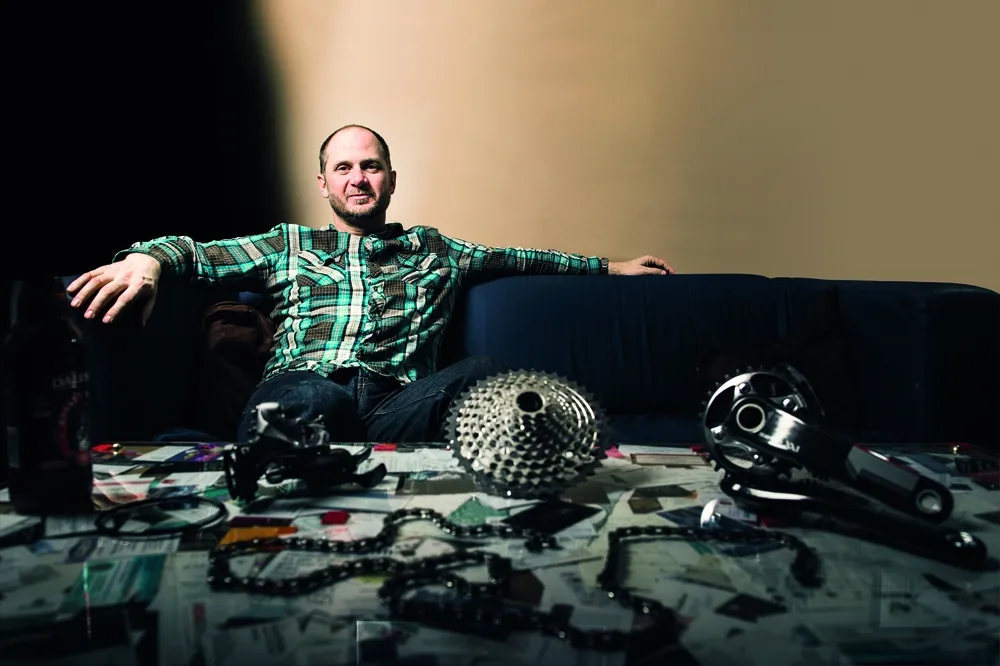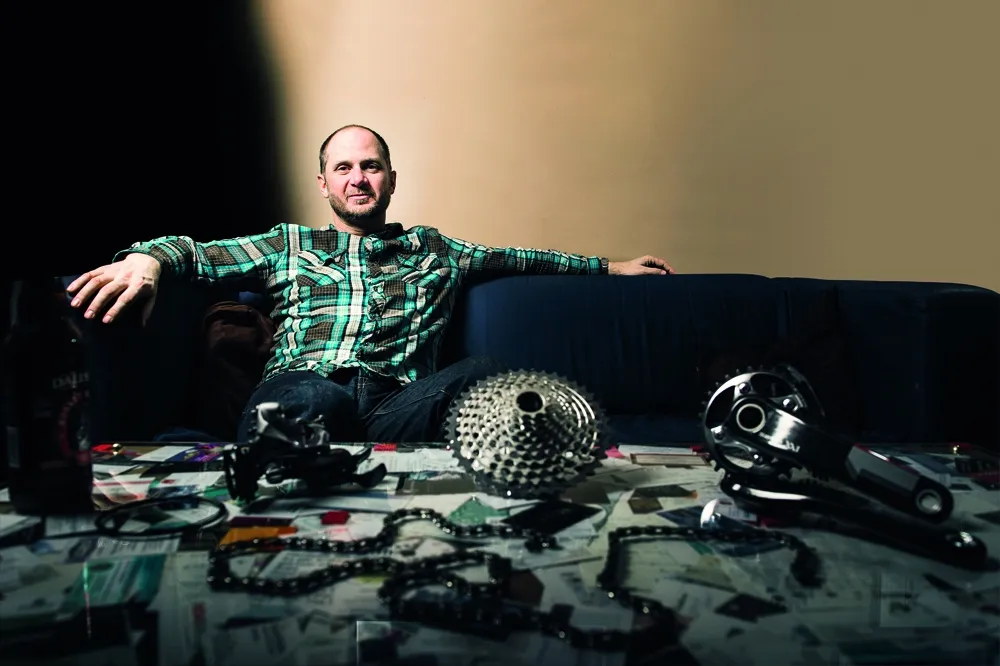Chris Hilton is the mountain bike drivetrain product manager at SRAM and responsible for the team that turned transmissions up to 11. One more gear may not sound much, but there’s far more to XX1 than that.
But how did this radical design come about, what’s the reaction been, what are the practicalities of bringing it into production – and how does he see it changing the mountain biking landscape? He spoke to What Mountain Bike…
At what point did you realise you’d created a real game changer?
“The design process was really short but really steep. Most of the individual ideas had been around for a while but each step we took revealed another potential advantage when we combined them.
Basically, by removing components, you're removing a whole load of mental and mechanical stress. There are so many front mech standards now that no front mech works with every bike, but that's exactly what SRAM XX has: no front mech.
Because it doesn’t even need a chainguide it removes one of the biggest headaches for frame designers. The whole seat tube area is becoming more crowded with larger wheel sizes and smaller suspension clearances, but a front mech can’t clog with mud or rub on a tyre if it’s not there. The best way to make sure a front shifter never fails is by not having one, and so on.
By removing components we’re also creating 'free' money and weight to spend elsewhere. We can use more expensive materials or manufacturing processes that make the bits that are left stiffer and stronger and still come out lighter and cheaper.
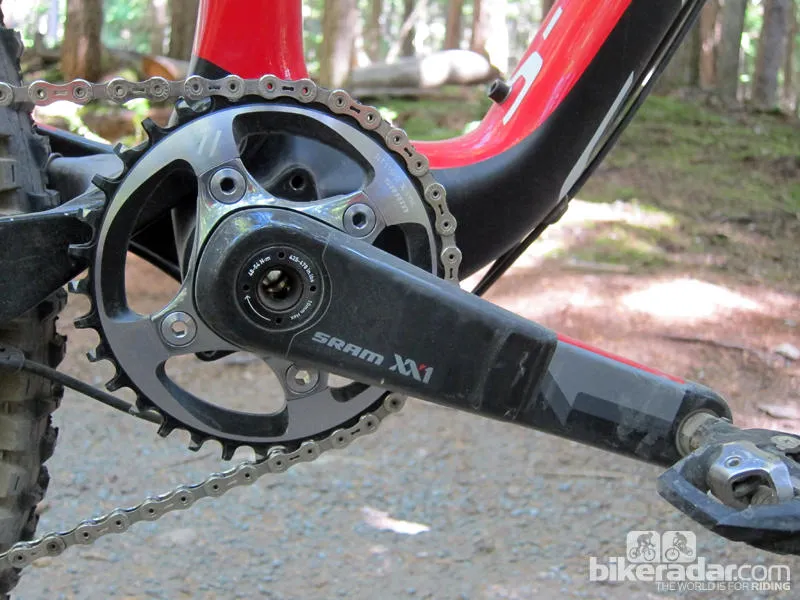
SRAM XX1 is lighter than XX
Every part of XX1 is heavier and stronger than XX but the overall group weight is lighter [BikeRadar tech ed James Huang agreed after his first ride review of SRAM XX1].
For example, the XX1 crank arms are exactly the same as the X0 DH cranks that have been taking beatings from heavyweight champions like Steve Peat, Stevie Smith, Sam Hill and Danny Hart for several seasons. Carbon can have some cosmetic issues but the cranks themselves are insanely strong.
Removing the need for a front shift, you also get a better chain line, more tooth contact to spread wear, and a stronger, simpler chain. Front shifts are an incredibly violent thing to do to a chain. There’s so much load at the point you’re trying to shift that everything involved – chain, chainrings, frame, cable and shifters – is under massive strain and more likely to fail, or at least compromise function, as a result.”
SRAM XX1 was a total surprise to everyone. How did you manage to keep it secret?
“It was a totally secret project. Nobody outside the development team in Schweinfurt knew about it. It only left Germany a couple of times on my bike, to see key people, but otherwise even our sales and marketing guys knew nothing about it during the prototyping phase – even my boss didn’t really know much about it until we put them on a prototype to ride. That’s cool because they trust what we are doing, but it’s scary because if you blow it you’re on your own.
We deliberately launched XX1 through our gravity enduro athletes. That meant Nico Vouilloz, Jerome Clementz and co got XX1 first, because we knew that if it survived them it’d be tough enough for anyone. The Olympic, World Championship and World Cup XC guys were upset that they didn’t have it, but those yahoos did.
I mean, realistically, World Cup XC is a highly specialised sport. They have carbon tubular wheels, handmade tires, support staff, support and feed zones during a race, etcetera… I have more cool bikes than five of your best riding buddies put together, but those guys have equipment resources that even I’m surprised by. They ride with incredible skill, for sure, but the bikes they ride are so far removed from normal that they'd win on anything.
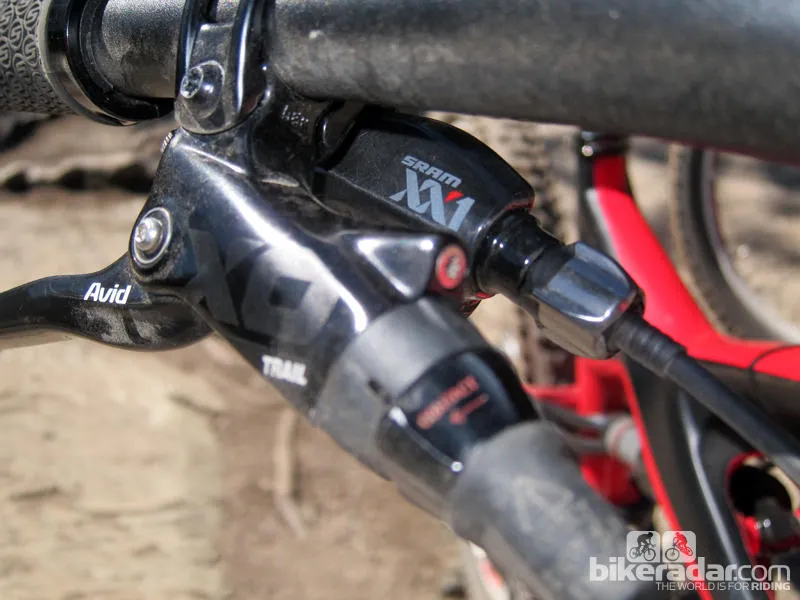
SRAM's new XX1 trigger shifter is compatible with MatchMaker X mounts
Having XX1 win the Olympics and XC World Championships is still pretty cool, though. I watched Nino [Schurter] and Jaro [Kulhavy] duking it out for the race in London, both on XX1, and all I could think was 'Grip Shift vs Trigger – the ultimate showdown!' That and, 'Oh god, please don’t break!' They literally did the biggest race of the year on non-production, still-not-perfect parts.”
The lid has been properly blown off in terms of wider interest, right?
“The reaction has been insane – much more positive than expected. It’s actually nuts how much people are all over it, and that can create problems in itself. My job is to predict how much we'll sell, and then the sales team make their predictions, but it’s really hard to gauge something so different and gear up production accordingly.
It’s not something you can rush, either, as all CNC machines are different even if they're theoretically identical. That means they each need checking when you're producing something as complex as an XX1 cassette.
That’s not the way a production team always see it, though. As far as they’re concerned, all machines are the same, so they can just run the same program and get exactly the same results.
We own the factories we’re using to make sure QC [quality control] is spot on, but it’s tempting to throw 10 machines on line straight away so they can get as many high-value items out of the door as quickly as possible. We have to make sure that things go out right so they don’t end up coming back, though.”
How soon will we be seeing the XX1 technology trickling down?
“We’re not going to become our own competitor sooner than we have to. Making a cheaper/higher value version isn’t a big issue, but at the end of the day we’re a business. When we’re selling as many US$300 cassettes as we can make, why would we produce a US$100 one and watch people spec that instead?
At the moment we have a product with no competitors. It’s great to have the volume market, but brand strength, identity and innovation is built through cutting edge componentry, and the rest will follow.
Ultimately, we try to provide options for our customers. If we provide the options they want, we are successful, if not… Can you let me know what your readers want? That’s the customer!”
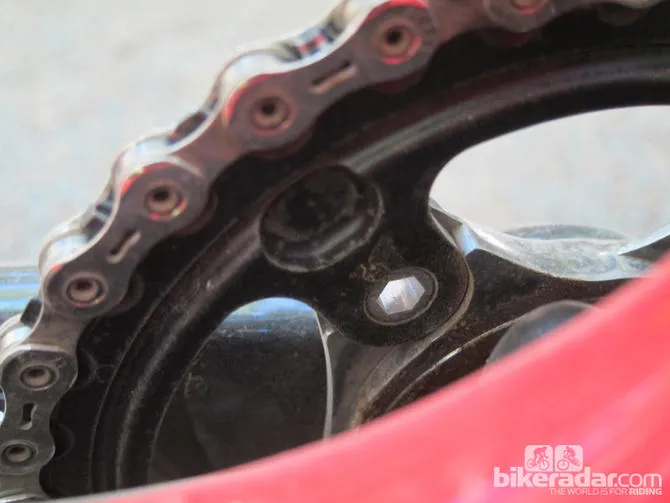
Threads are integrated into the chainring for easier installation and removal
How do you expect Shimano to react?
“Well, I don’t know if they will react, but surely any of our competitors see that we have a unique product and position in the market. I’m sure they have a plan for the next few years, just as we do. But like Mr Tyson said, everybody has a plan until they get punched in the face.
We do know it’s going to get exciting, though. The best part of this job is an ever-changing competitive landscape, and it’s also the worst part. Imagine if you are bombing down your favorite trail. You’ve got it dialed, just ripping, and then somebody decided to move a couple of trees and spread out the doubles another five feet…”
Where do you think the future of mountain bike gearing lies? Let us know in the comments area below. And for more information on the XX1 groupset, see the SRAM website.
An abridged version of this interview was originally published in What Mountain Bike magazine, available on Apple Newsstand and Zinio.
